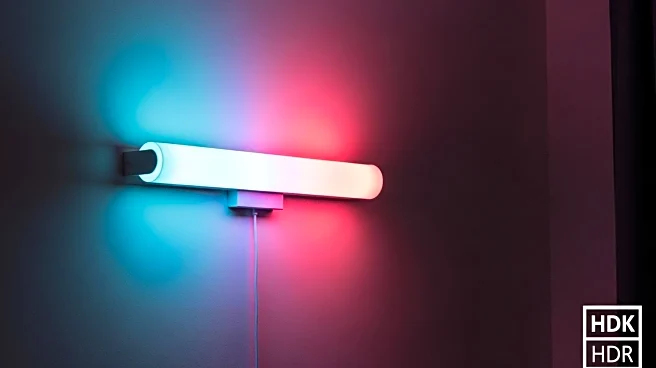What's Happening?
OLED TVs have become increasingly mainstream over the past decade, with manufacturers like LG Display refining production processes to reduce costs. Recent industry reports indicate that the cost of producing OLED panels has significantly decreased, with a 65-inch panel dropping from $1,000 in 2020 to approximately $600 in 2024, and projections suggest it could fall below $500 by the end of 2025. Despite these reductions, experts caution that consumers should not expect immediate price cuts on retail shelves. Manufacturers are likely to absorb the savings to recoup investments in factory expansions and workforce training. LG Display's cost-cutting measures have led to a 30% reduction in production costs last year, and further reductions are expected through design innovations. However, the emergence of RGB LED displays, which are considered a potential threat due to their advanced brightness and color reproduction, may not be as cost-effective as initially believed.
Why It's Important?
The reduction in OLED manufacturing costs is significant for the display technology industry, indicating potential for more affordable consumer electronics in the future. However, the lack of immediate price reductions highlights the complexities of market dynamics, where manufacturers prioritize recouping investments over passing savings to consumers. This situation underscores the importance of understanding the economic factors influencing consumer pricing. The competition from RGB LED displays also emphasizes the need for OLED manufacturers to innovate continuously to maintain market dominance. As OLED technology becomes more cost-efficient, it could lead to broader adoption and integration into various consumer electronics, potentially impacting the market share of competing technologies.
What's Next?
While immediate price reductions for OLED TVs are unlikely, the ongoing improvements in production efficiency suggest that more affordable options may become available in the future. Manufacturers will continue to focus on recouping investments, but as production costs decrease further, there may be opportunities for price adjustments. The competition from RGB LED displays will likely drive further innovation in OLED technology, potentially leading to new product offerings and enhanced features. Consumers can expect gradual changes in pricing and technology advancements as manufacturers navigate the balance between cost efficiency and market positioning.
Beyond the Headlines
The developments in OLED manufacturing highlight broader trends in the electronics industry, where technological advancements are often accompanied by strategic business decisions. The focus on recouping investments before passing savings to consumers reflects a common practice in industries with high initial costs. Additionally, the competition from RGB LED displays illustrates the dynamic nature of technology markets, where new innovations can quickly shift competitive landscapes. These factors contribute to the ongoing evolution of consumer electronics, where affordability and technological superiority are key drivers of market success.










